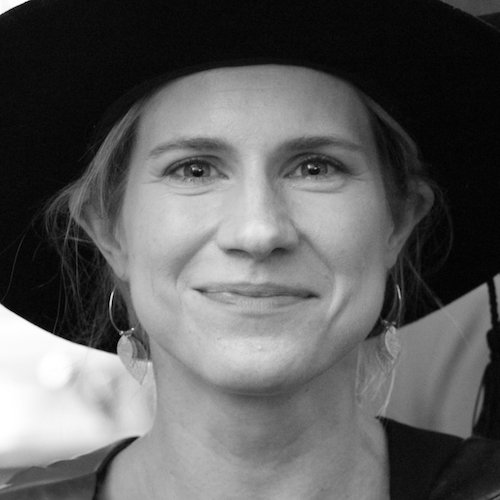What is loneliness?
Loneliness refers to thinking or feeling that we are alone, that we are lacking relationships, or that we don’t have meaningful connections with the people in our lives.i
This means that loneliness has both internal and external components. Living alone or having few social relationships can be external things that indicate loneliness, but how we think and feel about our relationships is also important.ii
Feeling connected or disconnected ultimately doesn’t depend on the number of people we know, but whether the relationships we do have are meaningful and meet our needs. Human beings are fundamentally social; we need each other, and we need positive relationships in our lives in order to flourish.
If we want to break it down further, some psychologists distinguish between two types of loneliness.iii People can experience both types together, or either one on its own:
Emotional Loneliness refers to our need for close, personal connection and communication, like we might have with a partner or best friend.iv
Social Loneliness refers to our need to be part of a social network, to feel included and part of a group. We might find this in places such as a community, religious organisation, or workplace.v

Who gets lonely?
Everyone can feel lonely sometimes, but anyone can also experience ongoing loneliness. During the Covid-19 lockdowns here in New Zealand, for example, many more people than usual reported that they were lonely.vi At any time, though, many people are feeling lonely. Some studies suggest that almost half of all Americans often experience loneliness, and 45% of people in England feel lonely at least occasionally.vii In general, we feel less lonely as we get older, and although loneliness can be a major concern for elderly people, younger people tend to feel the most lonely and disconnected.viii
There are social factors that contribute to feeling lonely. People who are unable to attain social norms and expectations are more likely to feel lonely.ix This could be someone’s health not allowing them to participate in “normal” activities, being unemployed or living in poverty, or being part of a socially marginalised group. Feeling excluded or undervalued by society contributes to people feeling lonely.
Feeling excluded or undervalued by society contributes to people feeling lonely.
Today, there are numerous ways to get in touch with people even from a distance, but technology is not always the answer. If we are communicating directly with people we know in real life, online communication can make us feel more connected. People who use the internet to talk to strangers, though, can end up feeling lonelier.x
People who frequently use social media are much more likely to feel alone.xi Not only are heavy social media users lonelier, but reducing social media use can actually make people feel less lonely!xii Strangely enough, when we look online to connect with people digitally, this can actually make us feel more lonely sometimes.xiii
People who seem more likely to be lonely include:xiv
- younger people (late teens/early twenties)
- people living alone
- people who frequently use social media
- people who are recent migrants
- people who identify as LGTBQ+
- people with disabilities
- people with poor health or ongoing health issues
- people living in poverty
- people who are unemployed
- people who are single parents

What are the effects of being lonely?
If people are lonely, they experience not only higher rates of depression, anxiety, and suicide, but also heart disease, high blood pressure, stroke, dementia, and premature death.xv Study after study has found that loneliness is at least as detrimental to our health as smoking, obesity, and substance abuse. Lonely people are also more likely to die prematurely, regardless of age, gender, or location.xvi In fact, loneliness has a bigger effect on younger people’s mortality than on those over age 65.xvii
Loneliness is affecting the quality and duration of many people’s lives, but also has a massive economic impact through both health and productivity costs.xviii Loneliness is clearly something we need to take seriously, no matter who we are or what stage of life we are in.
Over the next few weeks, we’ll be talking about loneliness, how to deal with feeling lonely, and how to work towards closer and more meaningful connections in our relationships.

Dr. Amie Lennox is a social anthropologist, researcher, writer, and teacher. Her area of expertise is human trafficking and labour exploitation, and structures of inequality within society. After growing up in northern Canada, Amie is now a proud kiwi, living in Snells Beach along with her husband and three children. Amie graduated with a PhD in social anthropology in 2019, winning the Dean’s List award, and has since been publishing her work, teaching at Waikato university, and conducting research for Thinkladder. When she’s not working, Amie is most likely lost while tramping in the New Zealand bush.
i Tamera Pearson, ‘Loneliness in Adults: Evidence-Based Research and Interventions for NPs’, The Nurse Practitioner 44, no. 9 (September 2019): 26–34, https://doi.org/10.1097/01.NPR.0000577952.12101.78; Liana DesHarnais Bruce et al., ‘Loneliness in the United States: A 2018 National Panel Survey of Demographic, Structural, Cognitive, and Behavioral Characteristics’, American Journal of Health Promotion 33, no. 8 (November 2019): 1123–33, https://doi.org/10.1177/0890117119856551.
ii M. H. Lim, J. Holt-Lunstad, and J. C. Badcock, ‘Loneliness: Contemporary Insights into Causes, Correlates, and Consequences’, Social Psychiatry and Psychiatric Epidemiology 55, no. 7 (July 2020): 789–91, https://doi.org/10.1007/s00127-020-01891-z; Philip S. Morrison and Rebekah Smith, ‘Loneliness: An Overview’, in Narratives of Loneliness: Multidisciplinary Perspectives from the 21st Century, ed. Olivia Sagan and Eric D. Miller (New York: TAYLOR & FRANCIS, 2019), 11–25.
iii Morrison and Smith, ‘Loneliness: An Overview’; Julianne Holt-Lunstad, Timothy B. Smith, and J. Bradley Layton, ‘Social Relationships and Mortality Risk: A Meta-Analytic Review’, ed. Carol Brayne, PLoS Medicine 7, no. 7 (27 July 2010): e1000316, https://doi.org/10.1371/journal.pmed.1000316; Roger J. Stancliffe et al., ‘Loneliness and Living Arrangements’, ed. Philip Ferguson, Intellectual and Developmental Disabilities 45, no. 6 (December 2007): 380–90, https://doi.org/10.1352/1934-9556(2007)45[380:LALA]2.0.CO;2.
iv Julianne Holt-Lunstad, Wendy Birmingham, and Brandon Q. Jones, ‘Is There Something Unique about Marriage? The Relative Impact of Marital Status, Relationship Quality, and Network Social Support on Ambulatory Blood Pressure and Mental Health’, Annals of Behavioral Medicine 35, no. 2 (April 2008): 239–44, https://doi.org/10.1007/s12160-008-9018-y.
v Hakan Ozcelik and Sigal G. Barsade, ‘No Employee an Island: Workplace Loneliness and Job Performance’, Academy of Management Journal 61, no. 6 (December 2018): 2343–66, https://doi.org/10.5465/amj.2015.1066.
vi Holly Walker 1982-, ‘Alone Together: The Heightened Risks of Loneliness Following Covid-19’, Policy Quarterly (Victoria University of Wellington. Institute for Governance and Policy Studies), 1 January 2020, http://ezproxy.massey.ac.nz/login?url=http://search.ebscohost.com/login.aspx?direct=true&db=edsinz&AN=e dsinz.999058139602837&site=eds-live&scope=site.
vii CIGNA, ‘CIGNA U.S. Loneliness Index: Survey of 20,000 Americans Examining Behaviors Driving Loneliness in the United States’, 2018, https://www.multivu.com/players/English/8294451-cigna-us-loneliness-survey/docs/IndexReport_1524069371598-173525450.pdf; Office for National Statistics, ‘Loneliness – What Characteristics and Circumstances Are Associated with Feeling Lonely?’ Analysis of characteristics and circumstances associated with loneliness in England using the Community Life Survey, 2016 to 2017 (UK Government, 2018), https://www.ons.gov.uk/peoplepopulationandcommunity/wellbeing/articles/lonelinesswhatcharacteristicsan dcircumstancesareassociatedwithfeelinglonely/2018-04-10.
viii Bruce et al., ‘Loneliness in the United States’; Pearson, ‘Loneliness in Adults’.
ix Morrison and Smith, ‘Loneliness: An Overview’.
x Adi Sharabi and Malka Margalit, ‘The Mediating Role of Internet Connection, Virtual Friends, and Mood in Predicting Loneliness Among Students With and Without Learning Disabilities in Different Educational Environments’, Journal of Learning Disabilities 44, no. 3 (May 2011): 215–27, https://doi.org/10.1177/0022219409357080.
xi Bruce et al., ‘Loneliness in the United States’.
xii Melissa G. Hunt et al., ‘No More FOMO: Limiting Social Media Decreases Loneliness and Depression’, Journal of Social and Clinical Psychology 37, no. 10 (December 2018): 751–68, https://doi.org/10.1521/jscp.2018.37.10.751.
xiii Zac E Seidler et al., ‘Virtual Connection, Real Support? A Study of Loneliness, Time on Social Media and Psychological Distress among Men’, International Journal of Social Psychiatry, 27 December 2020, 002076402098383, https://doi.org/10.1177/0020764020983836.
xiv Stats NZ, ‘New Sexual Identity Wellbeing Data Reflects Diversity of New Zealanders’ (Wellington, NZ: New Zealand Government, 2019), https://www.stats.govt.nz/news/new-sexual-identity-wellbeing-data-reflects- diversity-of-new-zealanders; CIGNA, ‘CIGNA U.S. Loneliness Index: Survey of 20,000 Americans Examining Behaviors Driving Loneliness in the United States’; Office for National Statistics, ‘Loneliness – WhatCharacteristics and Circumstances Are Associated with Feeling Lonely?’; Bruce et al., ‘Loneliness in the United States’; MSD, ‘“Loneliness.” The Social Report 2016 – Te Pūrongo Oranga Tangata’ (Wellington, NZ: New Zealand Ministry of Social Development, 2016), https://socialreport.msd.govt.nz/social- connectedness/loneliness.html; Philip S. Morrison, ‘The Economics of Loneliness’ (RSAI-BIS. 46th annual conference, Harrogate, UK, 2017), https://loneliness.org.nz/wp-content/uploads/2020/04/Morrison-RSAI-BIS- 2017-Harrogate.pdf; Keming Yang, Loneliness: A Social Problem, 1st ed. (Routledge, 2019), https://doi.org/10.4324/9781315148410.
xv Holt-Lunstad, Smith, and Layton, ‘Social Relationships and Mortality Risk’; Julianne Holt-Lunstad et al., ‘Loneliness and Social Isolation as Risk Factors for Mortality: A Meta-Analytic Review’, Perspectives on Psychological Science 10, no. 2 (March 2015): 227–37, https://doi.org/10.1177/1745691614568352; Yang, Loneliness; Danielle L. Rhodes, ed., Loneliness: Psychosocial Risk Factors, Prevalence and Impacts on Physical and Emotional Health, Psychology of Emotions, Motivations and Actions (New York: Nova, 2015); Natalia Martín-María et al., ‘Differential Impact of Transient and Chronic Loneliness on Health Status. A Longitudinal Study.’, Psychology & Health 35, no. 2 (February 2020): 177–95.
xvi Holt-Lunstad, Smith, and Layton, ‘Social Relationships and Mortality Risk’.
xvii Holt-Lunstad et al., ‘Loneliness and Social Isolation as Risk Factors for Mortality’.
xviii Cathrine Mihalopoulos et al., ‘The Economic Costs of Loneliness: A Review of Cost-of-Illness and Economic Evaluation Studies’, Social Psychiatry and Psychiatric Epidemiology 55, no. 7 (May 2019): 823–36, https://doi.org/10.1007/s00127-019-01733-7.